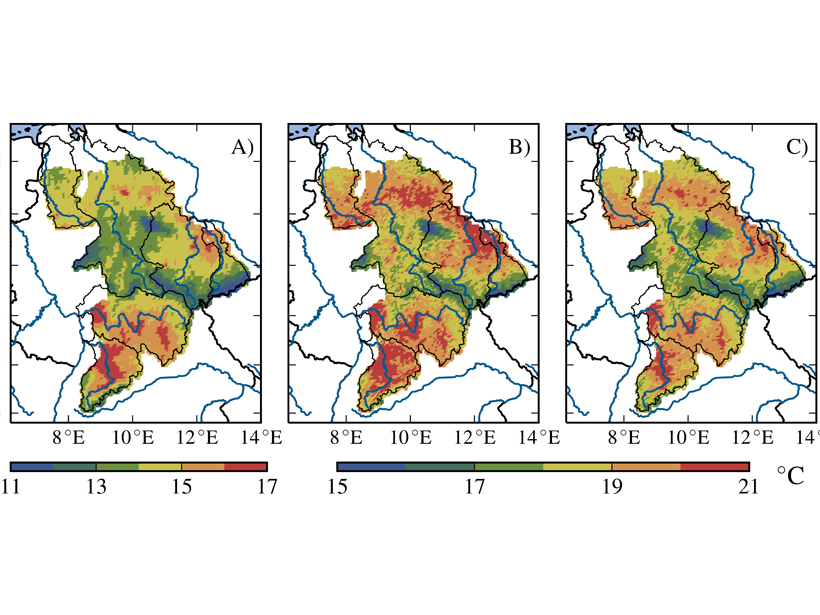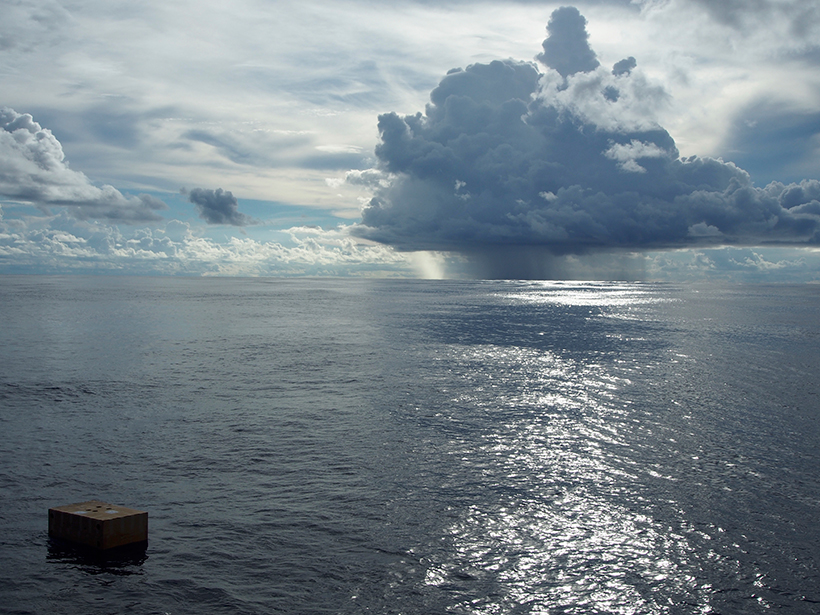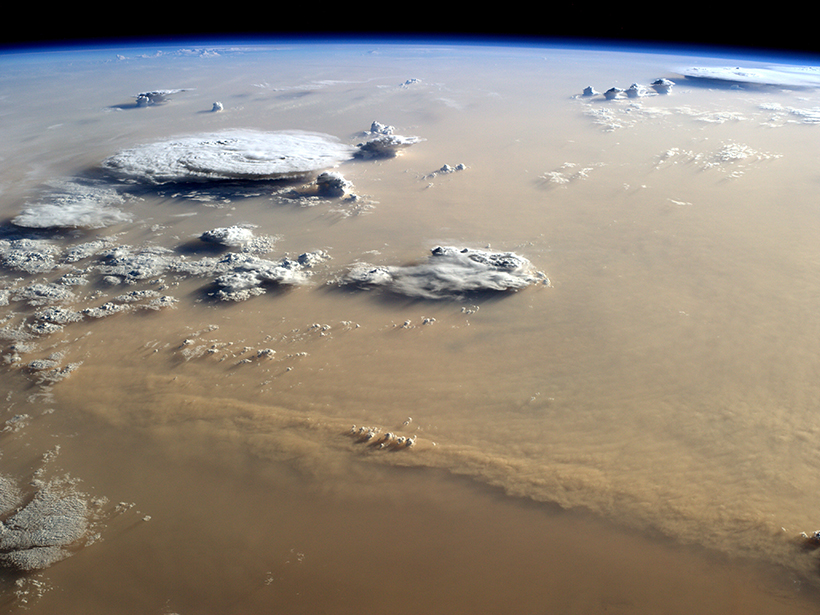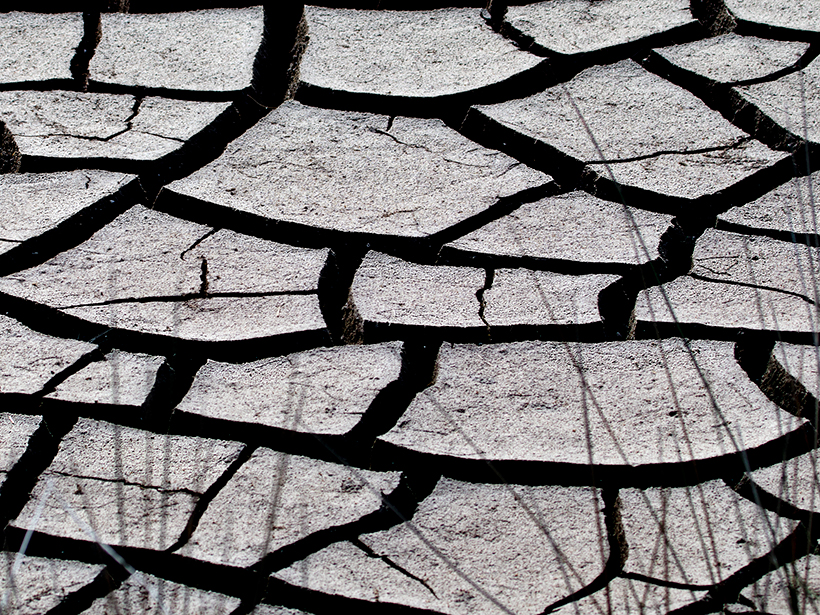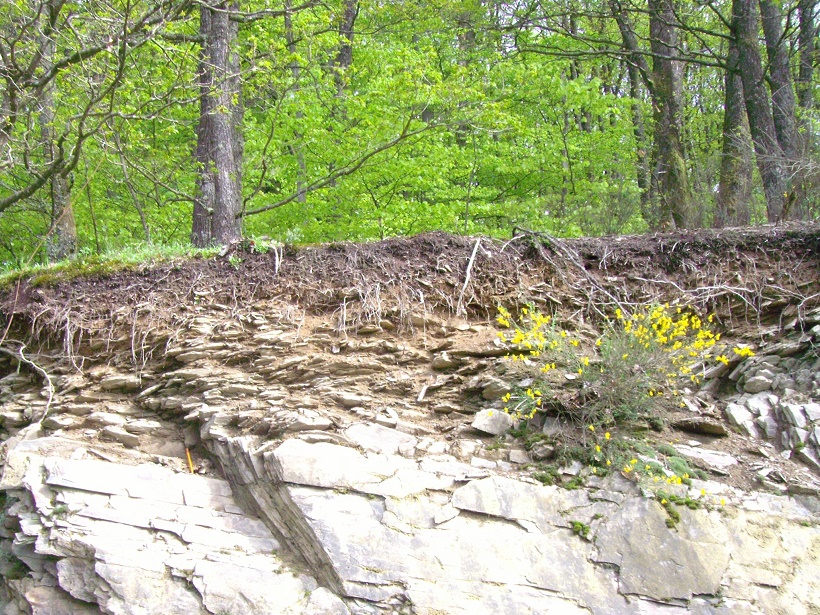Cosmic ray neutrons probe soil moisture in the Great Plains.
water cycle
Calibrating Hydrological Models by Satellite
Hydrological models are usually calibrated using observations of streamflow, but a new method uses remotely sensed land surface temperature for this purpose.
Piecing Together the Big Picture on Water and Climate
A new database brings together water isotope data from many sources, providing an integrated resource for studying changes in Earth’s hydroclimate over the past 2,000 years.
Pinpointing Effects of Hadley Cell Expansion
As a major atmospheric circulation system spreads farther poleward, some regions are drying out. But as time passes, will this drying be symmetrical across the globe?
Rethinking How Water Circulates Between the Oceans and Land
A reexamination of the global water cycle shows that tropical coastlines exert a profound influence on atmospheric water circulation by wringing water vapor from the atmosphere.
Humans to Blame for Higher Drought Risk in Some Regions
New observations and analysis dispel remaining doubts that anthropogenic climate change is expanding dry areas in northern midlatitudes.
Uncovering the Hidden Secrets of Water Vapor
A recent paper in Reviews of Geophysics describes how water vapor isotopic measurements and modeling can improve our understanding of the Earth’s water cycle.
Shedding Light on Intermittent Rainfall
A study provides a new modeling method to simulate rain when it pours and when it doesn’t.
The Future of Earth Looks Drier…but Just How Dry?
New analysis of soil moisture projections from climate models could help resolve a discrepancy between expected increases in aridity and precipitation over land.
Tracing Water Through the Critical Zone
The authors of a recent paper in Reviews of Geophysics describe how isotope hydrology offers new insights into interactions at the interface between soil, vegetation, and the atmosphere.


